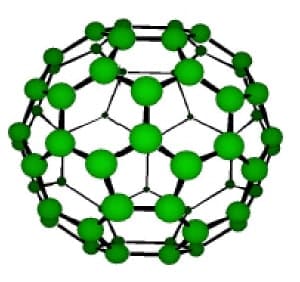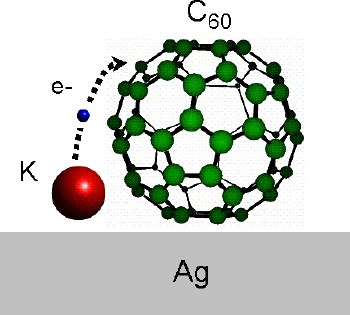Physicists in the US have moved a step closer to controlling the electronic properties of individual molecules in a condensed matter environment. Michael Crommie and colleagues at the University of California at Berkeley and the Lawrence Berkeley National Laboratory have demonstrated a new way to “dope” single carbon-60 molecules with potassium atoms. The team says its method is the molecular equivalent of the n-type doping that is widely used in the semiconductor industry (R Yamachika et al. 2004 Sciencexpress 1095069).

The doping of materials with atoms that accept or donate electrons, and therefore modify the electronic behaviour of the material, plays a crucial role in semiconductor electronics. Crommie and colleagues have now applied this idea to the fullerenes — molecules that consist of 60 carbon atoms arranged in a spherical shell (figure 1).
The Berkeley team used a scanning tunnelling microscope to drag a carbon-60 molecule over a silver surface containing potassium atoms. They found that they could attach an arbitrary number of potassium atoms to a single molecule. Each potassium atom donates a well-defined number of electrons to the molecule and so allows the electronic structure of the resulting potassium-fullerene complex to be controlled (figure 2). The process can be reversed by simply moving the structures back over the surface, where impurities – such as oxygen – can remove the potassium atoms one by one.
“Previously only extended monolayers and bulk crystals of carbon-60 have been modified through alkali metal adsorption,” Crommie told PhysicsWeb. “Our work opens a completely new regime by showing that it is possible to controllably dope a single, isolated molecule. This puts us in the unique position of knowing and controlling precisely how many dopant atoms are attached to a specific molecule.”
The team now hopes to extend its technique to more complex molecules and other dopant atoms. “We expect that our paper will inspire a whole new class of experiments on new and exciting nanostructured systems,” added Crommie.




